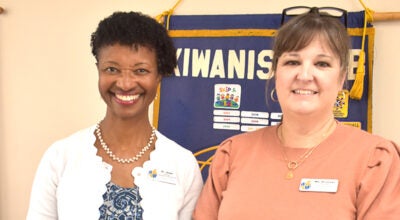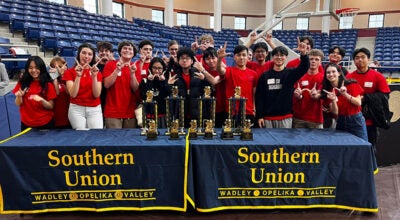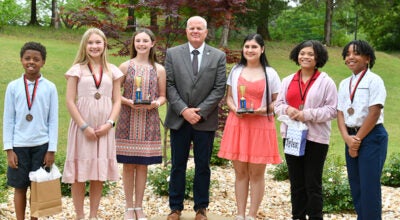The heritage of Strength Woven In
Published 7:39 am Friday, August 27, 2021
|
Getting your Trinity Audio player ready...
|
VALLEY — Chambers County’s “Strength Woven In” heritage is eloquently expressed in some highly-prized works of art. These artworks were crafted in 1936 by a then-little-known photojournalist named Margaret Bourke-White and are being carefully preserved by Cobb Memorial Archives.
The lead article in a recent edition of Alabama Heritage magazine tells of Bourke-White’s journey South in the middle of the Great Depression to capture artistic imagery of textile workers and the machines they labored at in a workplace setting.
The “Larger than Life” article was a collaboration between Cobb archivist Robin Watson and Alabama Heritage contributing editor Frances Robb. It’s richly illustrated with photographs taken by Bourke-White while on commission from the West Point Manufacturing Company. She produced six giant murals and 18 smaller photographs. The murals are some seven feet six inches in height and almost four feet wide. They were produced for the purpose of being put on permanent display in the company’s Shawmut Text Test building which opened in 1937.
In her September 1936 visit to the Valley, Bourke-White took many photographs of textile machinery in the mills at Lanett, Shawmut, Langdale, Fairfiax and River View. The murals show machine operators like Dick Wallace and Stanley McDonald of Shawmut Mill intently focused on their jobs of running massive machines.
During her visit, the article reads, Bourke-White “would have become aware of the metallic rhythm of the looms, felt the lingering heat that came through the enormous windows that supplemented the mills’ electric lights and watched particles of dust float in the air.”
Though highly respected in academic circles for her gift of art, Bourke-White (1904-1971) was not well known by the public at that time. That would soon change after her visit South. In November of that same year, her photo of the Fort Peck Dam in Montana graced the front cover of the first issue of Life magazine. That now iconic image was later chosen by the U.S. Postal Service to be part of its “Celebrate the Century” commemorative postal stamp series. Bourke-White is best known as the first foreign photographer permitted to take pictures of Soviet industry during the regime of Joseph Stalin. She was there twice, first in the 1930s during the Stalin’s Five-Year Plan and again during the invasion by Nazi Germany in 1941. Her body of work was published in Shooting the Russian War (1942). Bourke-White was the first female war correspondent and the first woman allowed to work combat zones in World War II.
During the war she earned the nickname “Maggie the Indestructible.” She was on a ship that was torpedoed in the Mediterranean Sea, on a bomber that was strafed by the Luftwaffe, and was once pulled out of the water when the helicopter she was riding in crashed into Chesapeake Bay. In the spring of 1945, she traveled through a collapsing Germany with General George Patton’s army and photographed the liberation of the Buchenwald concentration camp. She would later photograph the violence that took part in the partitioning of India and Pakistan and the Korean War.
Bourke-White photographs are now on display in the Brooklyn Museum, the Cleveland Museum of Art, the New Mexico Museum of Art and the Museum of Modern Art in New York. She also has a collection in the Library of Congress. Many of her manuscripts, photographs and negatives are housed in the Bird Library Special Collections section at Syracuse University.
Bourke-White was a pioneer for a high-achieving woman in a workplace setting. For years afterward, local millworkers who saw her at work in their mills talked about that brazen woman who wore pants.
It was a necessity with the kind of work she was doing. She had to stand on ladders and crawl up on machinery to get the right angle for her photoshoots. She was very meticulous in the way she lit her subjects and that took some awkward positioning.
The article in Alabama Heritage makes the point that Bourke-White wanted to highlight the consistency of the manufacturing process.
Millworkers of the day were well familiar with the processes of combining, roving, cone winding, slivering, creeping, warping and sizing.
Bourke-White’s 1936 murals and smaller photographs are being well protected today, but ideally should be on display in a “Strength Woven In” textile museum.





